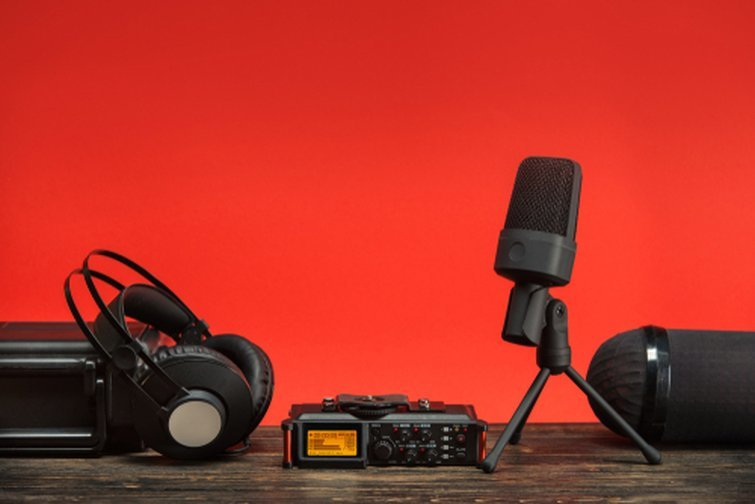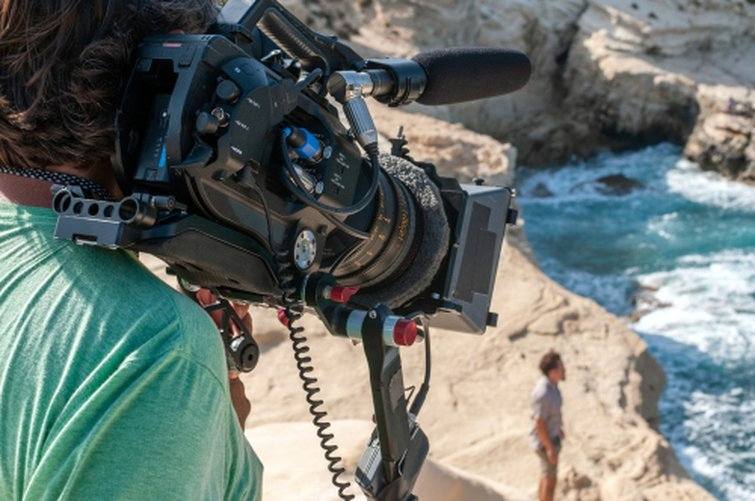
Cover image via
5 Principles of Documentary Filmmaking to Use on Your Next Film
Turn your documentary gear and skills into tools for narrative short and feature filmmaking. Dive in for more details.
For many starting off in film and video, the dream is strictly focused on making indie shorts and big-budget features. Everyone wants to be the next Quentin Tarantino, Kathryn Bigelow, or Spike Lee. However, as many will quickly find out, narrative film is only one avenue of the industry. In fact, you can often find much more work that’s just as fun and lucrative by working in other areas, like corporate video or documentary.
I’ve personally been drawn mostly into documentary work over my years, but I have to admit that I still love the idea of shooting narrative shorts—and hopefully features one day. And while these narrative opportunities don’t come around as often as documentary ones, I have noticed that in many ways your documentary work can very much inform and help your narrative filmmaking needs.
So, for those just starting off in the industry, or those who have worked in documentary or other areas for years, here are some principles and takeaways to keep in mind when approaching your next narrative project with a documentary focus.
Use a Versatile Camera
The first point has to do with your camera and gear. By its nature, documentary filmmaking is very chaotic and requires a great deal of flexibility on a shoot. You not only need to adjust on-the-fly, but you also need to be able to push your gear to get quality footage, often in less-than-optimal environments. One way documentary filmmakers do this is by choosing a solid, reliable camera that’s extremely versatile for a variety of situations.
We’re talking high ISO, strong low-light capabilities, and a wide dynamic range. A good documentary camera should also have solid stabilization for going handheld, good battery life, and easy-to-use controls for working fast and on-the-run.
When you think about narrative filmmaking, you usually think of working in highly-controlled environments. You also traditionally might think narrative lends itself to pristine image quality, huge amounts of light, and cinematic shallow focus compositions. However, while that might be true on big-budget productions, more often than not, you end up doing narrative filmmaking with slimmed-down resources and budgets.
Which is why I’d argue that a solid and versatile camera at the mid-range DSLR or mirrorless level, or one of the more affordable cinema cameras that are staples for documentary work, can actually be your best bet for narrative. You also don’t always need the newest, fanciest versions of many of these cameras. Instead, opt for reliability on long productions and find those with proven track records.
A few to consider:
- Blackmagic Pocket Cinema Camera 4K
- Panasonic GH5
- Sony a7 III
- Canon C100
- Sony FS7
Learn to Find Your Lighting

Along with deciding what camera you’re going to use for your project, lighting is also important. When working on documentaries, you’ll often find yourself in situations where you have no control of the lighting whatsoever. When you’re working in narrative, you should absolutely have control of as much of the lighting as possible. However, I’d argue that a good documentary filmmaker might actually have a better understanding of lighting and better instincts for “finding” the best lighting and angles for any shot.
In narrative filmmaking, you want to use lighting to create emotions, express your characters, and direct the audience’s eye to particularities. Documentary filmmakers work much in the same way, but we’re often challenged to do so with little control. Sometimes, though, all it takes is changing the angle and using the light from a window to capture things from a different perspective.
There are also subtle lighting controls you can use to slightly enhance scenes and compositions by adding in a makeshift bounce board or using a small LED light to touch up a face. These little tricks can be extremely valuable in your narrative compositions as a way to help you find the light, rather than spend all your time trying to create it.
Use Multiple Audio Sources

One valuable lesson I’ve learned from documentary filmmaking that would absolutely carry over to narrative is simply the importance of audio. You should always record from multiple sources. You’d think this would be standard practice across all types of film and video production, but I’ve been on enough corporate and narrative shoots to know that audio can be treated as an afterthought.
However, as any good documentarian will tell you, recording audio is always a challenge when you’re out in the field. You never feel secure with just one audio source. Using a boom mic for narrative is fine, but from a documentary perspective, I’d recommend either hiding a lapel or two on your actors or using another recording device near the action. If the boom audio gets dropped, corrupted, or lost, you’ll at least have good audio to use for a scratch track until you can do some ADR.
Always Keep Rolling

Another trick that I’ve used a great deal in documentary filmmaking that carries over for short films or features is to always keep the camera rolling. This comes from shooting either documentary interviews or B-roll as a way to capture those little extra moments that can often be much more raw and endearing. You don’t have to record continuously, but by just keeping it rolling for a few moments longer than you normally would, you’ll find that people put their guards down a bit once they feel they’re off camera.
The same can be true in narrative situations. Good filmmaking really is about creating—or capturing—realness in your performances. Sometimes that means the delivery of a line of dialogue, but often it’s simply in faces, reactions, and moments. If you can record just a little bit more of your actors in their natural states without the pressure of performing, you may be surprised at what you find.
Embrace New Tech and Apps
Finally, as we continue to move into a bold new future of digital filmmaking, where DIY production and run-and-gun projects can be shot with minimal budgets and crews, there are plenty of digital solutions that can help both documentary and narrative filmmakers alike.
When working in documentary, there were many times that I’d have to be a one-man-band handling the producing, shooting, and editing—often on-the-fly. To help out when you don’t have a full crew, there are plenty of new technologies and smartphone apps that can help you along the way.
The most helpful apps assist with producing your narrative films as you can limit the amount of scripts, paperwork, and storyboards/shot charts you carry by uploading everything to your phone. I highly recommend checking out this full list of filmmaking apps that includes some helpful resources for shot lists, lens charts, and digital viewfinders:
- ShotList
- MatchLens
- Artemis Directors Viewfinder
At the end of the day, documentary and narrative film projects will always be different by their nature. You can never truly approach one like you would the other. However, if you’re coming from a documentary background, you actually have several more tools available to you than you might think. And, if you’re just starting out, exploring documentaries first can be a perfect way to get started in film and video.
For more documentary and narrative filmmaking advice, check out these resources below.
- Filmmaking 101: Shooting a Video from Start to Finish
- Tips from Renowned Cinematographers for Your Next Film
- The Power of Movement: The Best Gimbals for a Small Budget
- 5 Small, Budget-Friendly Lights for Any Camera Setup
- Tips and Tricks for Making a Film with Zoom Technology
Cover image by Virrage Images.






